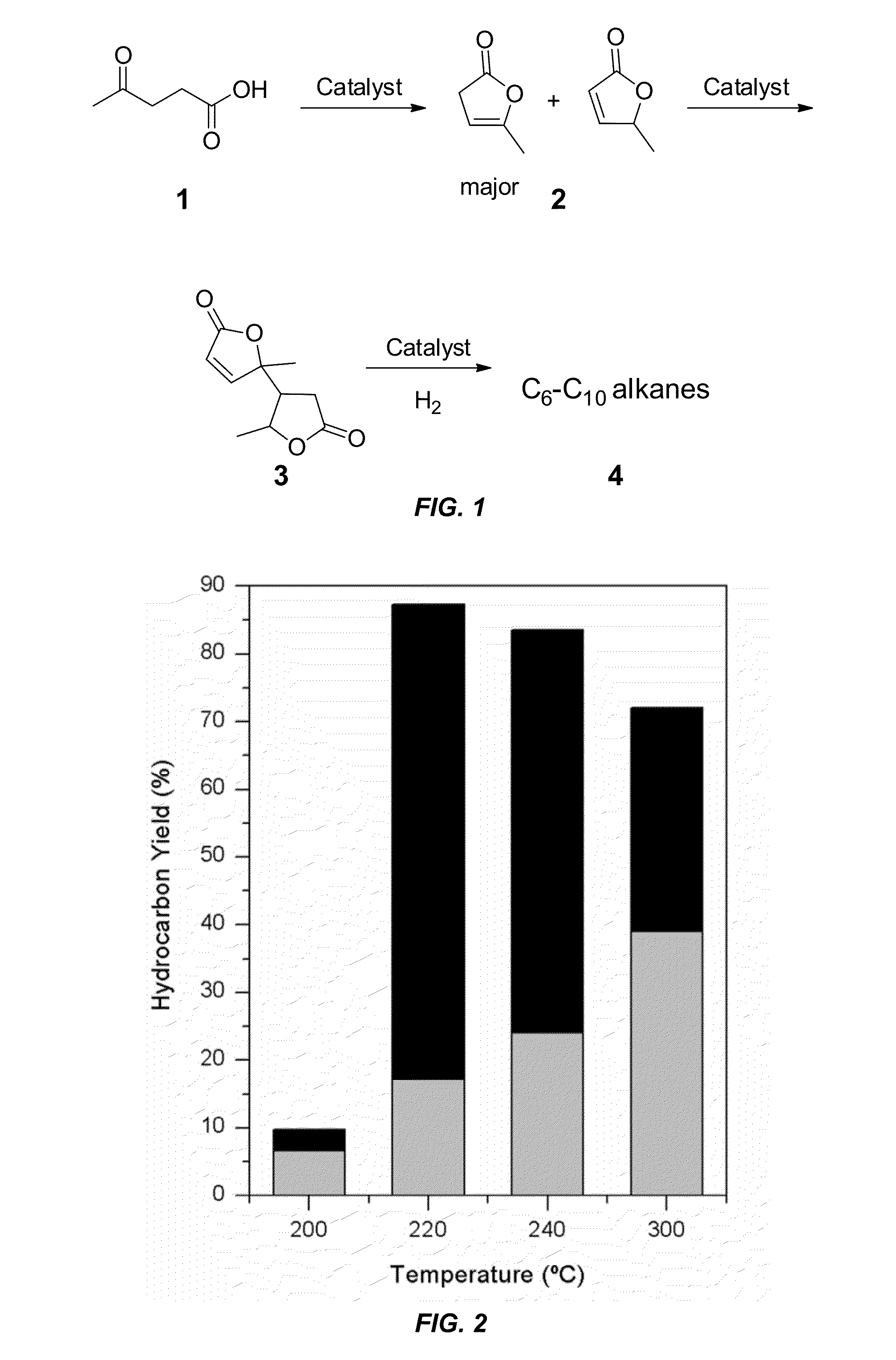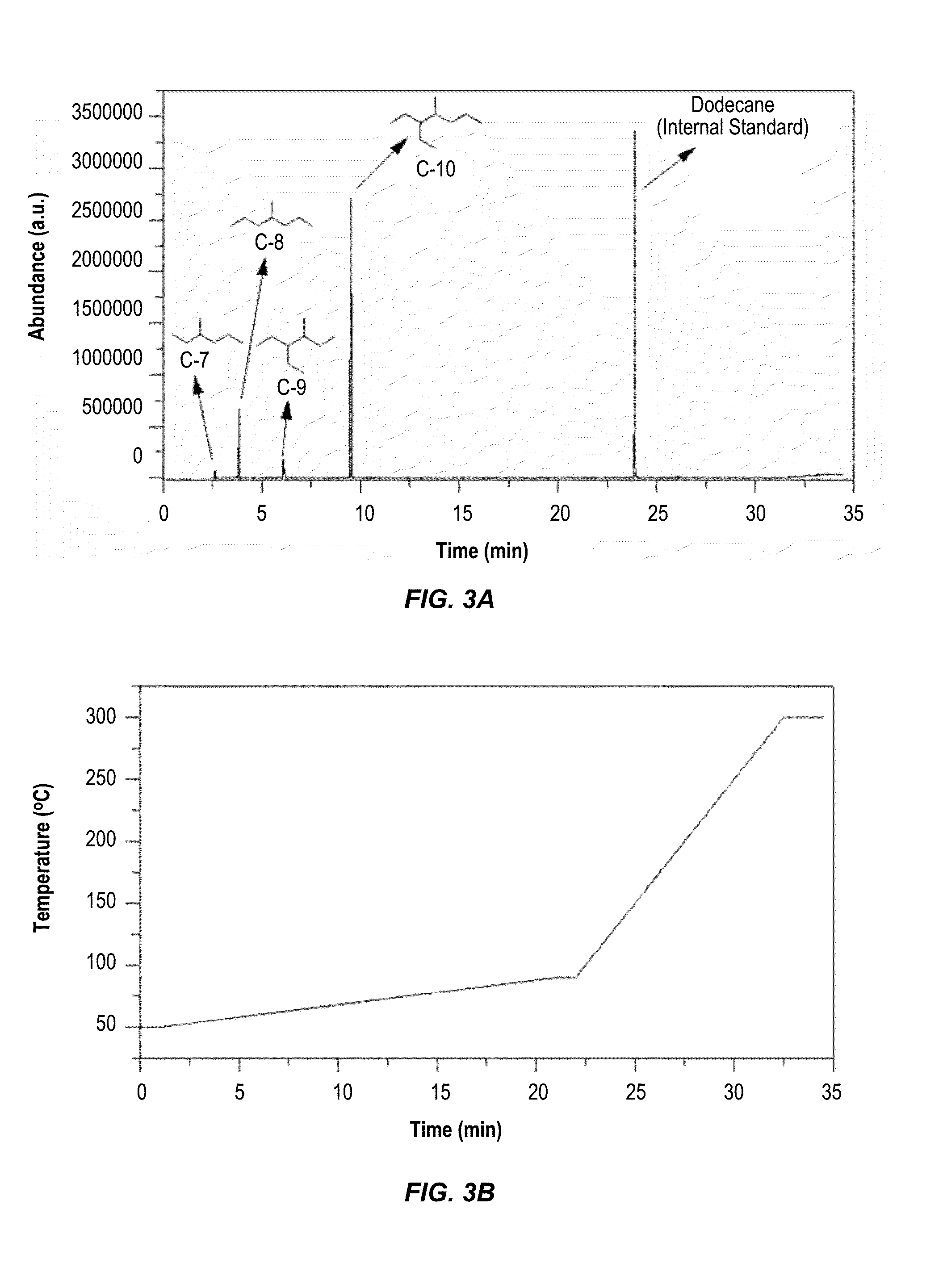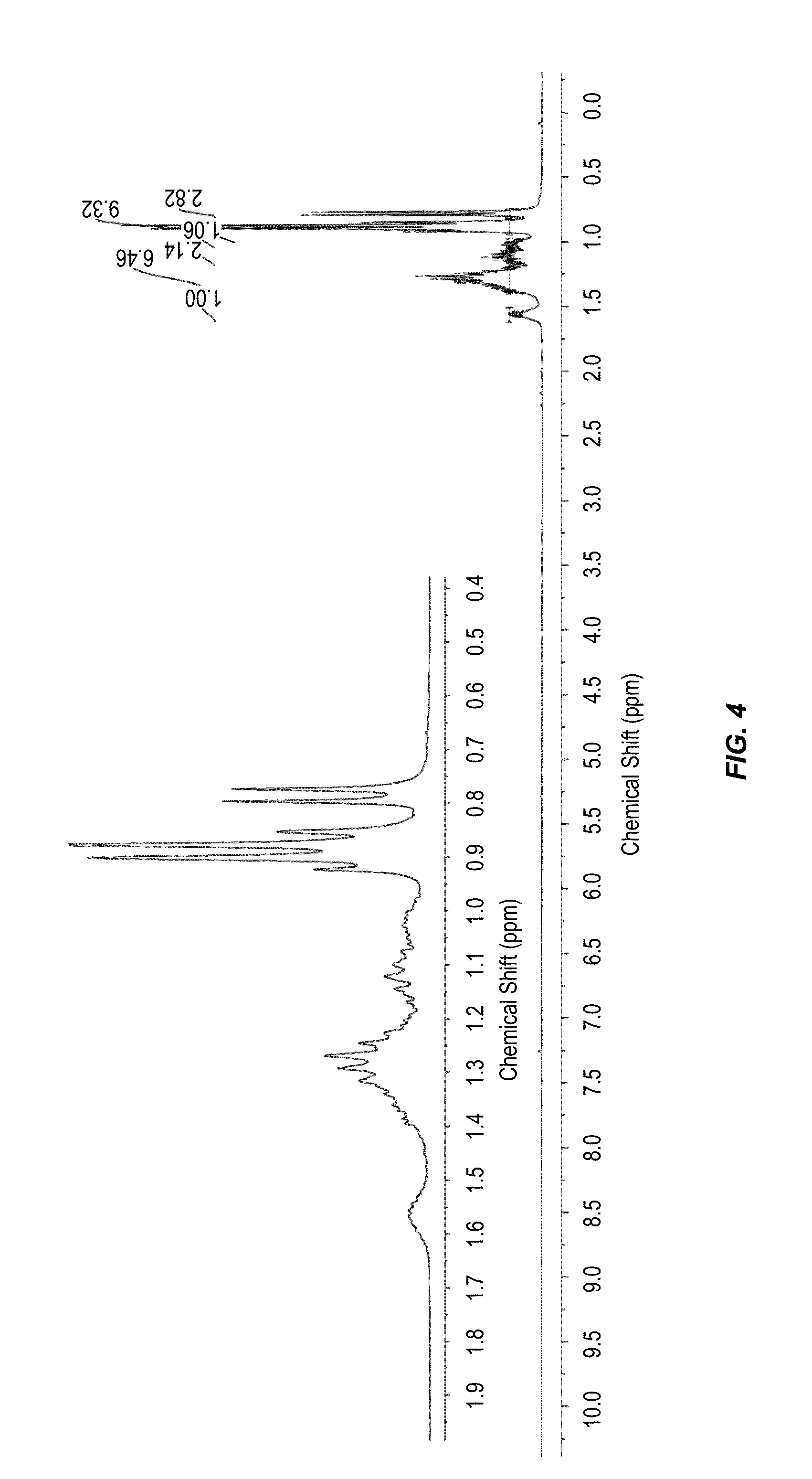Gasoline prepared from biomass-derived levulinic acid
a technology of biomass-derived levulinic acid and gasoline, which is applied in the field of gasoline prepared from biomass-derived levulinic acid, can solve the problems of poor availability of hmf on an industrial scale, and the relative abundance of csub>5 /sub>sugar in biomass compared to csub>6, and achieve the effect of reducing lactone to alkan
- Summary
- Abstract
- Description
- Claims
- Application Information
AI Technical Summary
Benefits of technology
Problems solved by technology
Method used
Image
Examples
example 1
Preparation of Angelica Lactone from Levulinic Acid
[0085]Angelica lactone (AL) 2.
[0086]Levulinic acid 1 (20.01 g, 172.3 mmol) and montmorillonite K 10 (2.0 g, 10 wt %) were introduced into a round-bottomed flask with a magnetic stirrer bar. The flask was attached to a distillation setup with a 170 mm Vigreux column and the pressure in the system was reduced to 50 mm Hg using a vacuum pump with a pressure regulator. The mixture was heated in an oil bath with good stirring. The distillation started when the bath temperature reached 165° C. The clear liquid in the collecting flask was seen to separate into two phases. Dichloromethane (50 mL) was added and the organic layer was separated and dried over Na2SO4. Removal of the drying agent and evaporation of the solvent yielded a mixture of α (major) and β (minor) angelica lactones 2 as a clear liquid (15.60 g, 92%). The distillation flask was re-charged with fresh levulinic acid 1 and the reaction repeated twice in succession, giving AL ...
example 2
Synthesis of Angelica Lactone Dimer
[0088]Angelica Lactone Dimer (ALD) 3.
[0089]Anhydrous K2CO3 (0.60 g, 4.3 mmol, 5 mol %) was added to angelica lactone 2 (10.00 g, 101.9 mmol) and the reaction flask was purged with argon and sealed. The suspension was placed in a pre-heated (70° C.) oil bath and stirred for 6 h. The mixture was cooled to room temperature and dichloromethane (100 mL) was added to the resulting thick paste with stirring. The K2CO3 was filtered off and the filtrate was washed with water (100 mL). The organic layer was separated, dried over Na2SO4 and the solvent was evaporated to give the angelica lactone dimer 3 as light yellow oil (9.3967 g, 94%). The liquid solidifies when refrigerated overnight to give a white crystalline solid. 1H NMR (CDCl3, 300 MHz): 7.36 (d, J=6.0 Hz, 1H), 6.16 (t, J=6.0 Hz, 1H), 4.45-4.32 (m, 1H), 2.73-2.44 (m, 2H), 2.34-2.28 (m, 1H), 1.51-1.37 (m, 6H). 13C NMR (CDCl3, 75 MHz): 174.4, 171.3, 158.3, 157.9, 121.9, 121.7, 87.6, 87.2, 76.9, 76.3, ...
example 3
Synthesis of Alkanes from Angelica Lactone Dimer
[0091]Synthesis of Cu—ZnO / Al2O3 Catalyst.
[0092]The Cu—ZnO / Al2O3 catalyst was synthesized following a literature method [Peng et al., Chin. J. Catal. 2010, 31, 769] with minor modifications. Copper(II) nitrate hemipentahydrate (3.63 g), zinc nitrate hexahydrate (5.88 g), and aluminum nitrate nonahydrate (8.83 g) were dissolved in HPLC grade water (120 mL) to form solution A. In a separate flask, sodium carbonate (9.20 g) was dissolved in HPLC grade water (60 mL) to form solution B. Solution A was heated at 80° C. for 15 min, after which Solution B, which had been pre-heated to 80° C., was added dropwise over 45 min with rapid stirring. A thick, bluish-white precipitate appeared. After aging the mixture for 1 h to ensure complete co-precipitation, the solid was filtered under vacuum while hot and washed thoroughly using HPLC grade water (8×100 mL) until the pH of the washes was neutral. The precipitate was dried for 3 h in air at 100° C....
PUM
| Property | Measurement | Unit |
|---|---|---|
| pressure | aaaaa | aaaaa |
| temperature | aaaaa | aaaaa |
| pressure | aaaaa | aaaaa |
Abstract
Description
Claims
Application Information
 Login to View More
Login to View More - R&D Engineer
- R&D Manager
- IP Professional
- Industry Leading Data Capabilities
- Powerful AI technology
- Patent DNA Extraction
Browse by: Latest US Patents, China's latest patents, Technical Efficacy Thesaurus, Application Domain, Technology Topic, Popular Technical Reports.
© 2024 PatSnap. All rights reserved.Legal|Privacy policy|Modern Slavery Act Transparency Statement|Sitemap|About US| Contact US: help@patsnap.com










